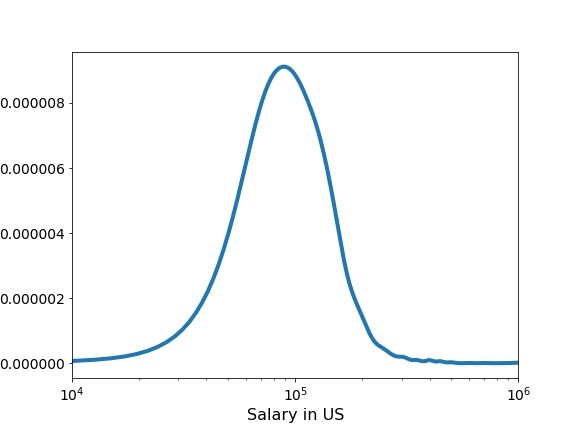Pandas’ plot function is extremely useful in quickly making a variety of plots including density plots, boxplots and many more. In this post, we will see examples of making simple density plots using Pandas plot.density() function in Python. Let us first load the packages needed. We will use data from 2019 Stack Overflow developer survey.… Continue reading Density Plots with Pandas in Python
Author: datavizpyr
How To Make Density Plots with ggplot2 in R?
In this tutorial, we will see how to make density plots with ggplot2 in R. We will start with an example of making a basic density plot with ggplot2 and see multiple examples of making the density plots better. Let us load tidyverse, a suite R packages from RStudio and also set the default theme… Continue reading How To Make Density Plots with ggplot2 in R?
Time Series Plot or Line plot with Pandas
In this tutorial, we will learn how to make line plot or time series plot using Pandas in Python. Pandas’ plotting capabilities are great for quick exploratory data visualisation. Time Series plot is a line plot with date on y-axis. Let us load the packages needed to make line plots using Pandas. We will use… Continue reading Time Series Plot or Line plot with Pandas
How to Combine Multiple ggplot2 Plots? Use Patchwork
When you have made great data visualizations often you have to combine the plots into a single figure. Thomas Lin Pedersen from RStudio has made a fantastic R package to combine the plots. In his words, The goal of patchwork is to make it ridiculously simple to combine separate ggplots into the same graphic. As… Continue reading How to Combine Multiple ggplot2 Plots? Use Patchwork
5 tips to make better histograms with ggplot2 in R
Histograms are of great use to visualize a uni-variate distribution. As ggplot2 defines, histograms “Visualise the distribution of a single continuous variable by dividing the x axis into bins and counting the number of observations in each bin.” ggplot2’s geom_histogram() function displays the counts as bars and it also makes it easy to customize histograms… Continue reading 5 tips to make better histograms with ggplot2 in R
